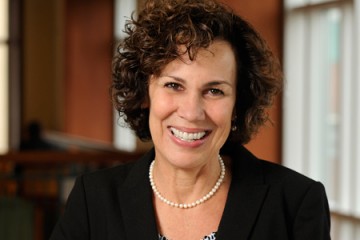1. What's at the top of your to-do list?
As the first person to hold my position, I need to explore and evaluate where Johns Hopkins University is with digital initiatives, and establish a baseline of what we currently are doing across the nine divisions in digital education. A major goal within the first six months is to work with various stakeholders, including the Council of Deans, a newly created Faculty Advisory Group for Digital Education, the Instructional Technology Academic Committee, and a newly created Student Advisory Group. These groups can help guide, establish, and provide information on the challenges and make recommendations as to how JHU faculty, leaders, and students embrace this new digital education pedagogy.

Image caption: Pam Jeffries
Image credit: Will Kirk / Johns Hopkins University
2. What keeps you up at night?
Trying to predict the evolution of higher education over the next three to five years. How can Johns Hopkins maximize the digital technology that will be available to us? How can we be a leader in the field? How will Johns Hopkins be defined, and what will it look like in the world of digital education and initiatives in three years? And how will we maintain and foster the value of a residential education—all at the same time?
3. What's in store 10 years from now?
The driving forces over the next decade include the digital natives, the concept of openness, and the "connected age." On the horizon, with the driving forces we have more emerging technologies, devices, just-in-time learning, and other ways to be connected we never thought about.
4. Tell me something I don't know about Johns Hopkins.
As of Feb. 1, there have been more than 850,636 enrollments in Johns Hopkins' massive, open online courses offered by only two divisions: the schools of Public Health and Nursing.
Posted in University News, Voices+Opinion









